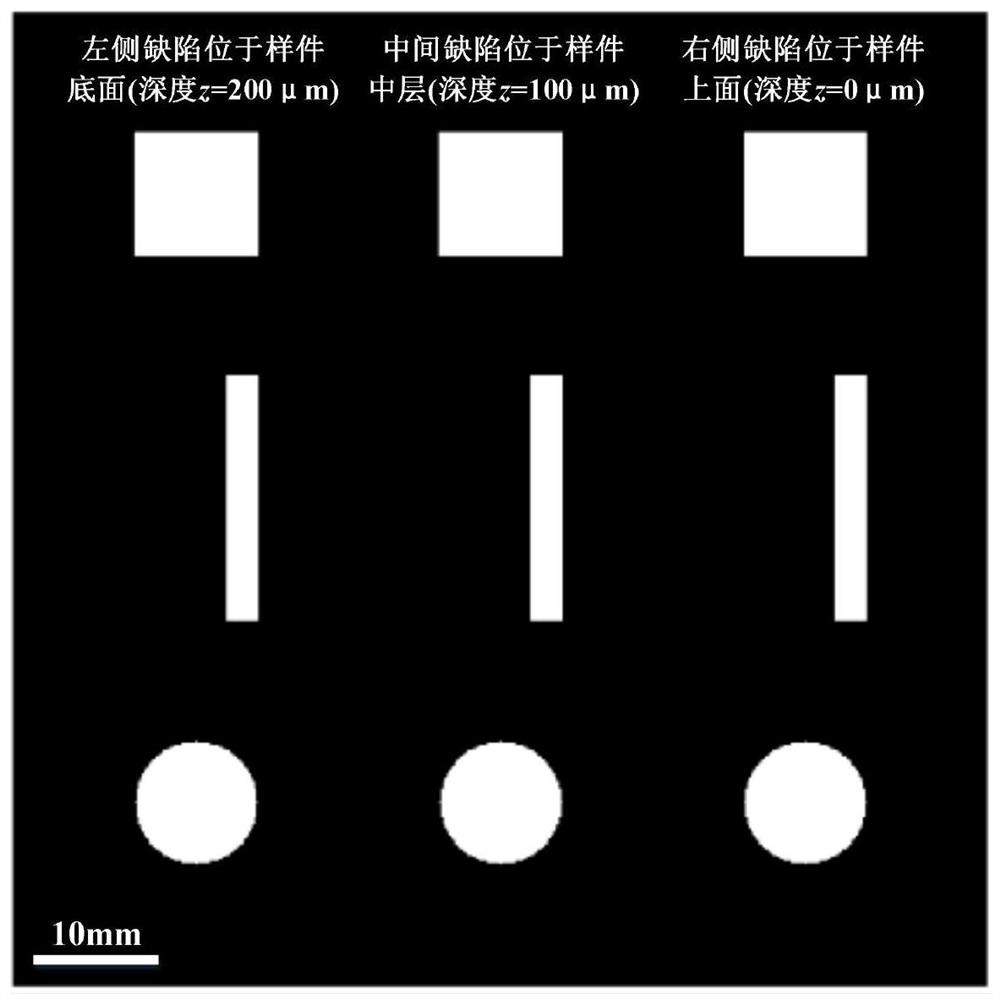A system and method for accurate characterization of layered micro-defects in dark-field phase-locked thermal imaging of solar cells
A solar cell and thermal imaging technology, applied in image analysis, image data processing, image data processing, etc., can solve the problems of inability to obtain the difference of the luminous signal on the front and rear surfaces, the luminous signal cannot pass through, and the defect depth information, etc. Detection ability, high signal-to-noise ratio, and the effect of improving signal-to-noise ratio
- Summary
- Abstract
- Description
- Claims
- Application Information
AI Technical Summary
Problems solved by technology
Method used
Image
Examples
specific Embodiment approach 1
[0066] Specific implementation mode one: as figure 1 As shown, the system for accurate characterization of solar cell layers provided by this embodiment consists of a suction hose 1, an exhaust hose 2, a vacuum pump 3, a water cooling pump 4, a water inlet hose 5, a drain hose 6, and a metal sample Table 7, Vacuum Adsorption Device 8, Water Cooling Heat Dissipation Plate 9, Silicon Solar Cell Sample 10, Sample Fixture 11, DC Power Supply Positive Output Line 12, DC Power Supply Negative Output Line 13, DC Power Supply 14, Solar Cell Defect Layer Accurate Characterization Software 15, computer 16, first signal transmission line 17, data acquisition card 18, second signal transmission line 19, third signal transmission line 20, fourth signal transmission line 21, infrared thermal imager 23, three-dimensional mobile platform, wherein:
[0067] Described three-dimensional moving platform is made of Y moving platform 22, Z moving platform 24 and X moving platform 25, Y moving platf...
specific Embodiment approach 2
[0079] Specific embodiment 2: This embodiment provides a layered and accurate characterization of micro-defects in solar cells using the system described in Specific Embodiment 1. The method measures the 0° images of the front and rear surfaces of the solar cell sample , -90° image, amplitude image and phase image, the corresponding images are subtracted to obtain the defect depth resolution result of the solar cell sample. The specific implementation steps are as follows:
[0080] Step (1): Determine the silicon solar cell sample 10 to be measured, place it on the metal sample stage 7, with the front grid facing up;
[0081] Step (2): Turn on the vacuum pump 3 and the water-cooled pump 4, place the sample fixture 11 at the gate of the silicon solar cell sample 10, fix the sample fixture 11 so that the two are in good contact, connect the positive output line 12 of the DC power supply with the The metal sample table 7 is connected, and the negative output line 13 of the DC powe...
specific Embodiment approach 3
[0089] Specific Embodiment 3: This embodiment provides a method for using the system described in Specific Embodiment 1 to carry out hierarchical and accurate characterization of solar cell defects. The method uses the point spread function PSF (Point Spread Function) to obtain 0°, -90°, amplitude and phase images are deconvoluted to obtain the real part and imaginary part images respectively. By changing the heat source depth z defined in the point spread function, until the deconvoluted imaginary part image is zero or reaches the minimum, this The heat source depth z in the point spread function at time is the actual depth of solar cell defects, and the depth position of the heat source can be distinguished. Specifically include the following steps:
[0090] Step (1): Determine the silicon solar cell sample 10 to be measured, place it on the metal sample stage 7, with the front grid facing up;
[0091] Step (2): Turn on the vacuum pump 3 and the water-cooled pump 4, place t...
PUM
 Login to View More
Login to View More Abstract
Description
Claims
Application Information
 Login to View More
Login to View More - R&D
- Intellectual Property
- Life Sciences
- Materials
- Tech Scout
- Unparalleled Data Quality
- Higher Quality Content
- 60% Fewer Hallucinations
Browse by: Latest US Patents, China's latest patents, Technical Efficacy Thesaurus, Application Domain, Technology Topic, Popular Technical Reports.
© 2025 PatSnap. All rights reserved.Legal|Privacy policy|Modern Slavery Act Transparency Statement|Sitemap|About US| Contact US: help@patsnap.com



